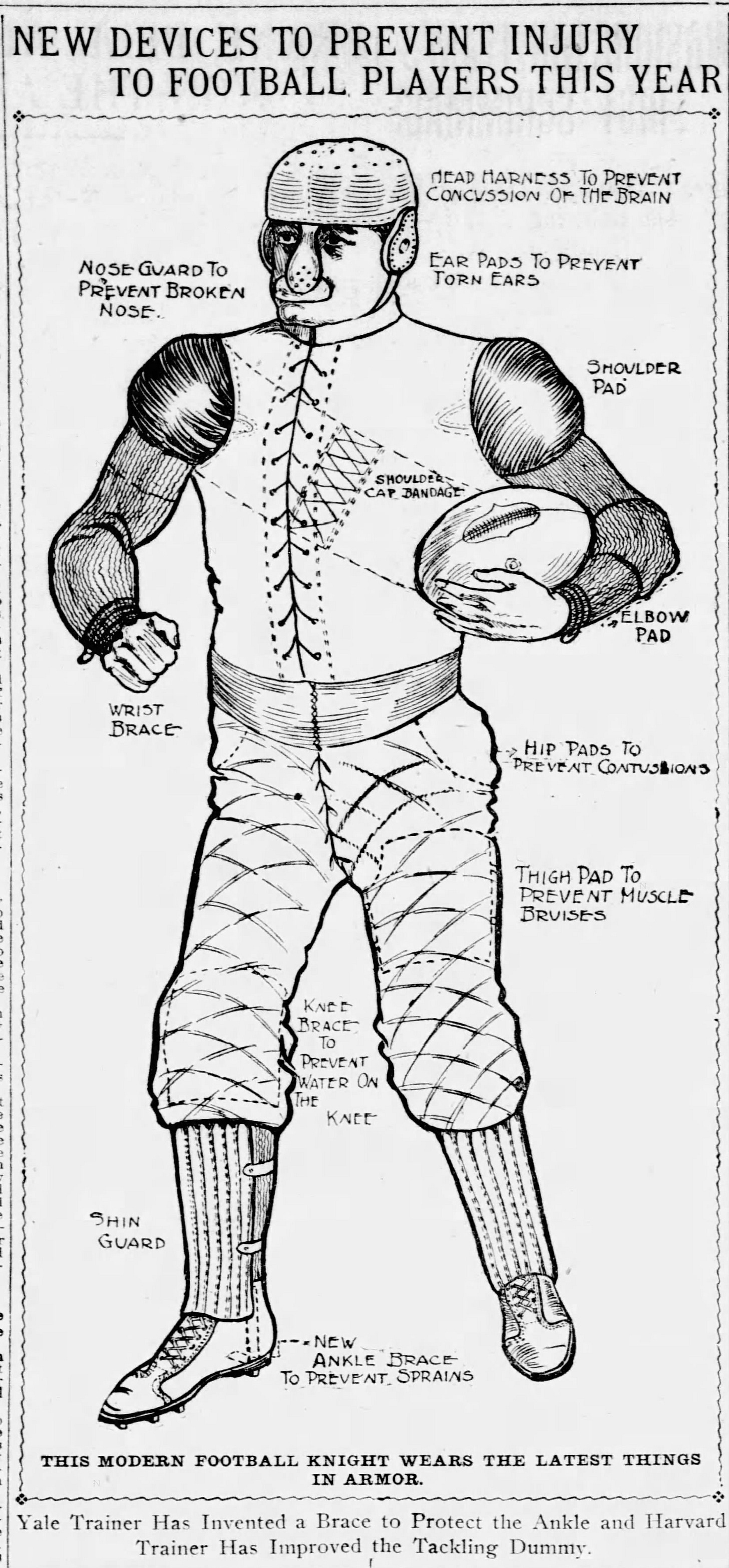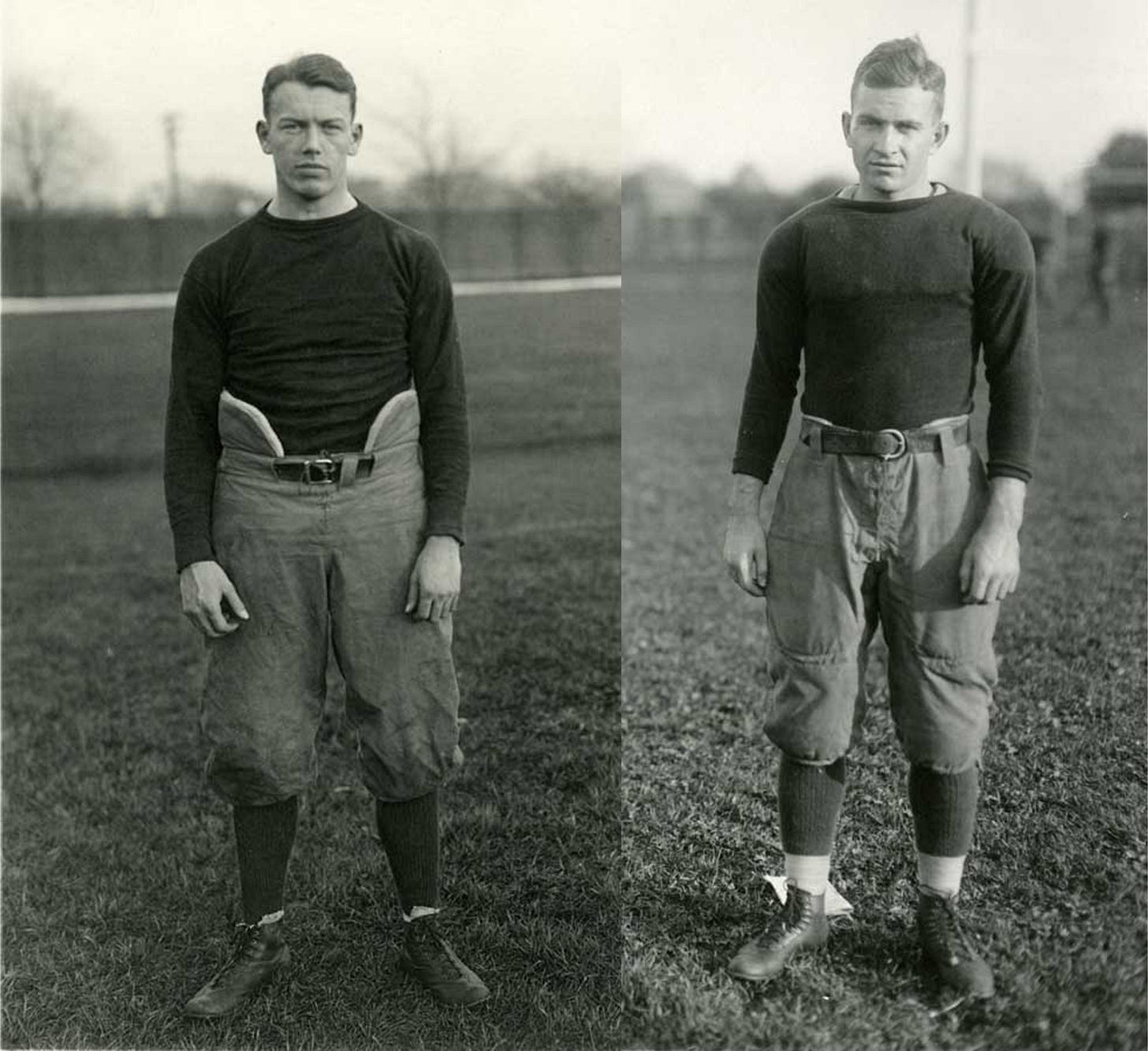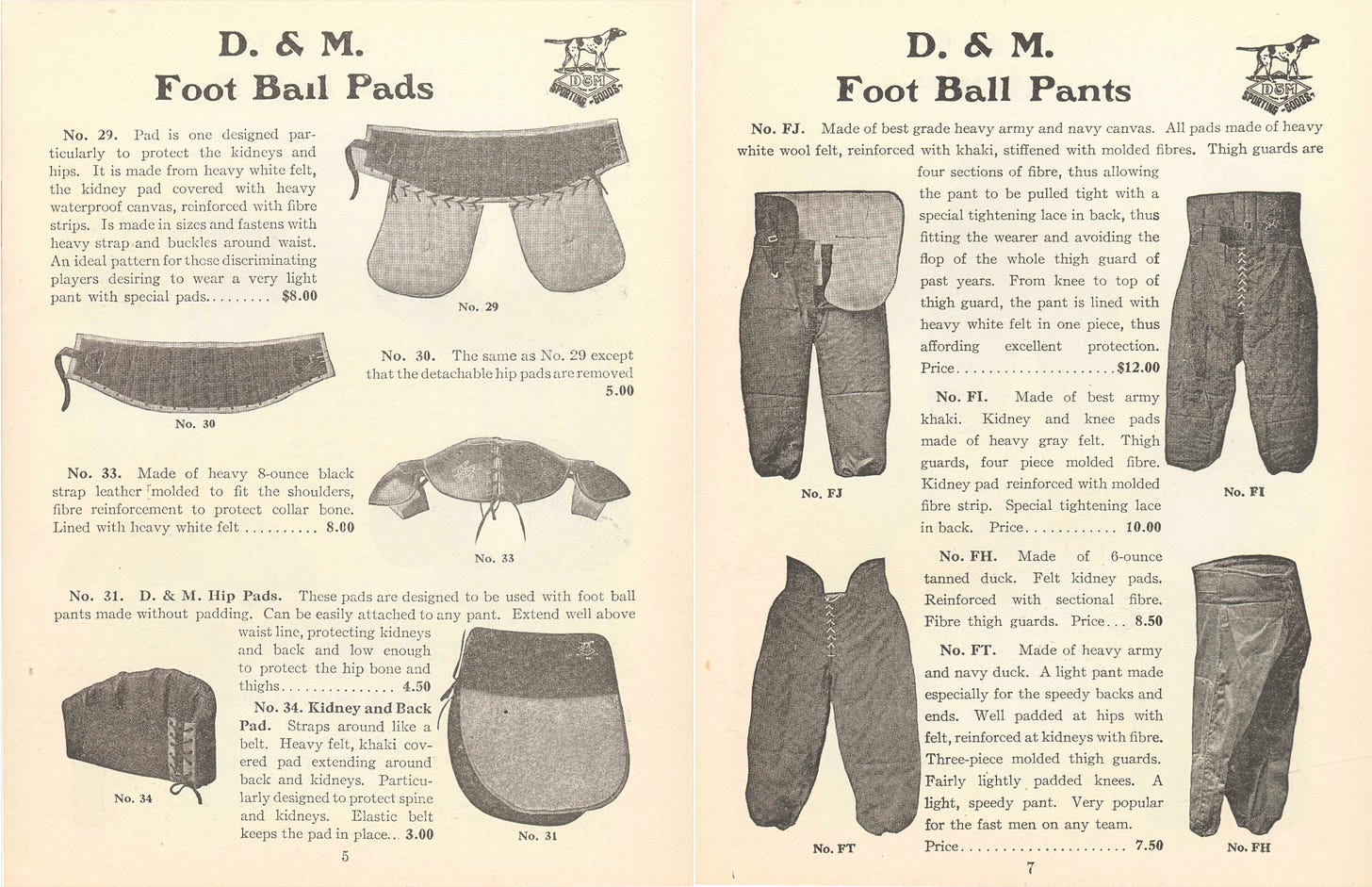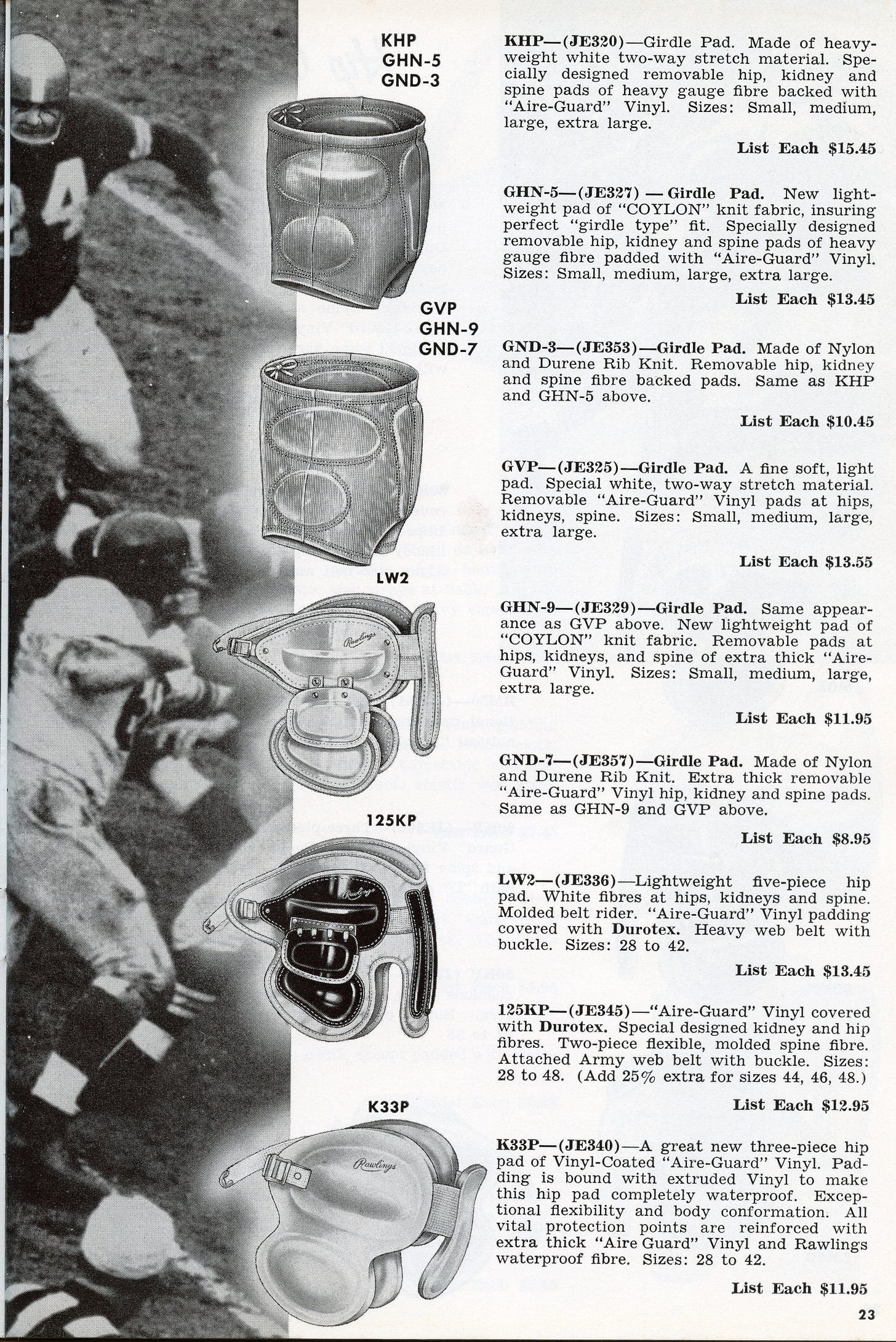The Rise and Fall of Hip and Kidney Pads
The various forms of football equipment have always combined function and fashion, with hip and kidney pads exemplifying both when they peaked in the 1920s.
Like shoulder pads that originated as stuffed leather pads of cushions sewn on the exterior of football jerseys, hip pads arrived in the 1890s. However, they were typically sewn on the inside of the pants, making them less visible than shoulder pads. At the time, fashionable women commonly wore hip pads below their corsets, presumably to enhance their curves. Hence, a search of newspaper articles from the 1890s reveals many advertisements and fashion columns discussing hip pads for women. The idea that football players began wearing them inspired a few jokes at the time.
One of the few comments about hip pads in the context of football resulted from Harvard's team doctor visiting the Penn locker room before their 1898 game and noting that Penn's players had pieces of aluminum concealed under their hip pads. He protested the practice with the referee, and while the referee allowed Penn to use them since the metal was padded properly, Penn agreed to remove the aluminum sheets for the Harvard game.
An illustration from 1902 notes that players padded their hips to prevent concussions to the tackler, though they presumably prevented wearers from getting hip pointers as well.

A snazzy-looking Homer Haggard, Missouri's captain in 1904, modeled the latest in padding with elbow, shoulder, hip, and knee pads, along the ribbed thigh pads. While Haggard proudly wore hip pads on the exterior of his union suit, others went without or had them sewn on the interior.
By 1910, D&M integrated hip pads into their pants, but they remained positioned low on the hips and did not rise above the belt line.
A change arose in the early 1910s with the innovation that increased the height of the hip pads and had them wrap around the back to protect the kidneys as well. Some credited Harvard with giving rise to kidney and hip pads extending above the belt around 1910, while Michigan's football trainer and track coach, Stephen Farrell, developed a version in 1913. Despite Farrell’s efforts, not everyone chose to wear them, even players in Ann Arbor.

Over the next few years, the height of some brands of hip and kidney pads began climbing. Some players liked the high risers and others kept them low.
Harry Eielson, who starred for the 1918 Great Lakes team, wore his hip pads high enough that he likely chafed his armpits from time to time. The same was true for the unknown player in the RPPC.
The 1920-1921 D&M catalog shows their hip, kidney, and back pads available for separate purchase. They offers versions of their pants that integrated the pads at various heights and designs.
The high hip period did not last long. By the mid-1920s, D&M hip pads had dropped. While they remained higher than today throughout the 1930s and early 1940s, the pads transitioned to the wraparound style with fibre and strap leather providing mechanical protection atop the rubber pads.
Wraparound hip pads remained on the market into the 1970s, while the step-in or girdle-style arrived by the mid-1950s, eventually replacing the wraparound style.
Football Archaeology is reader-supported. Click here to buy one of my books or otherwise support the site.









